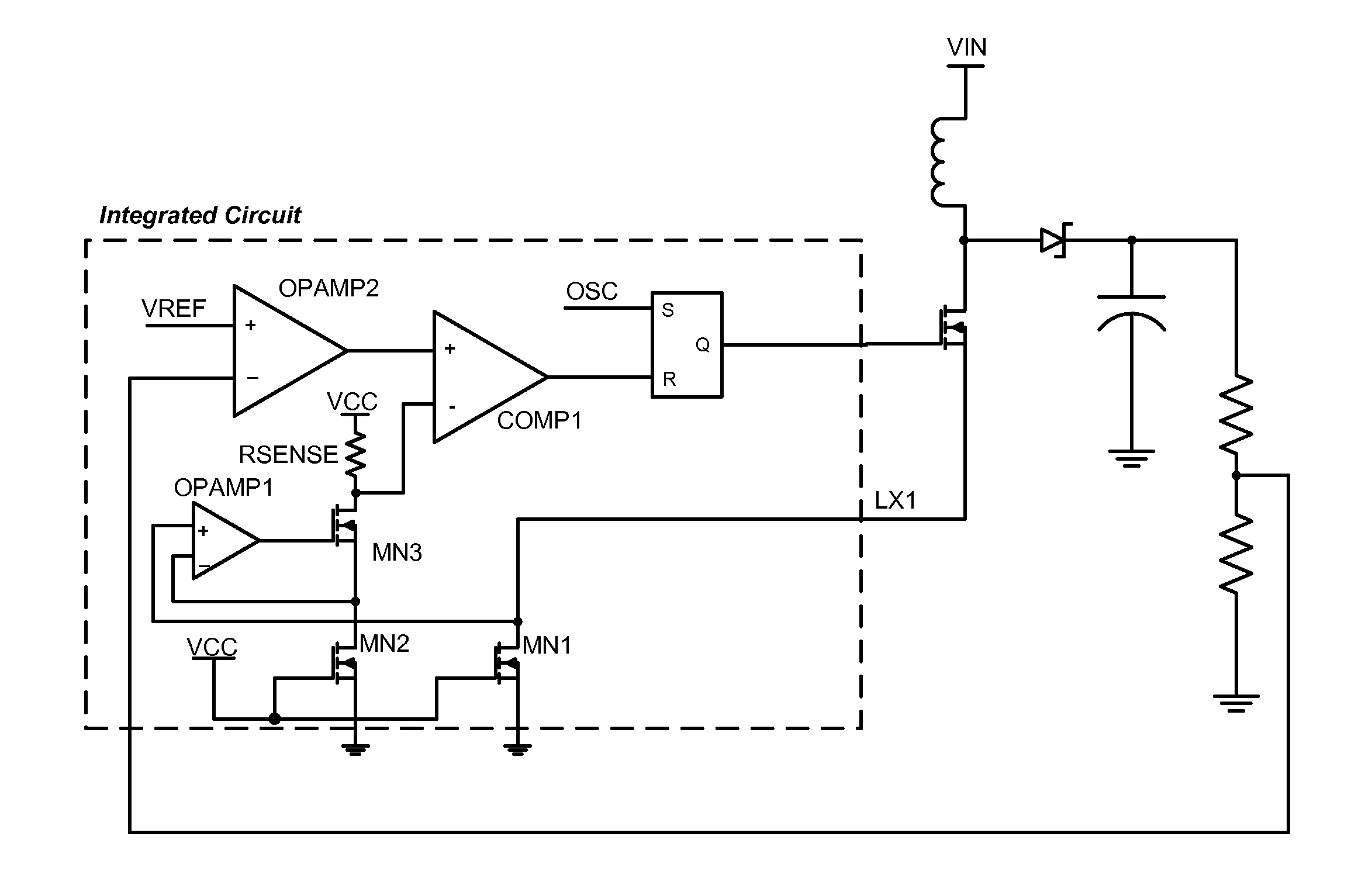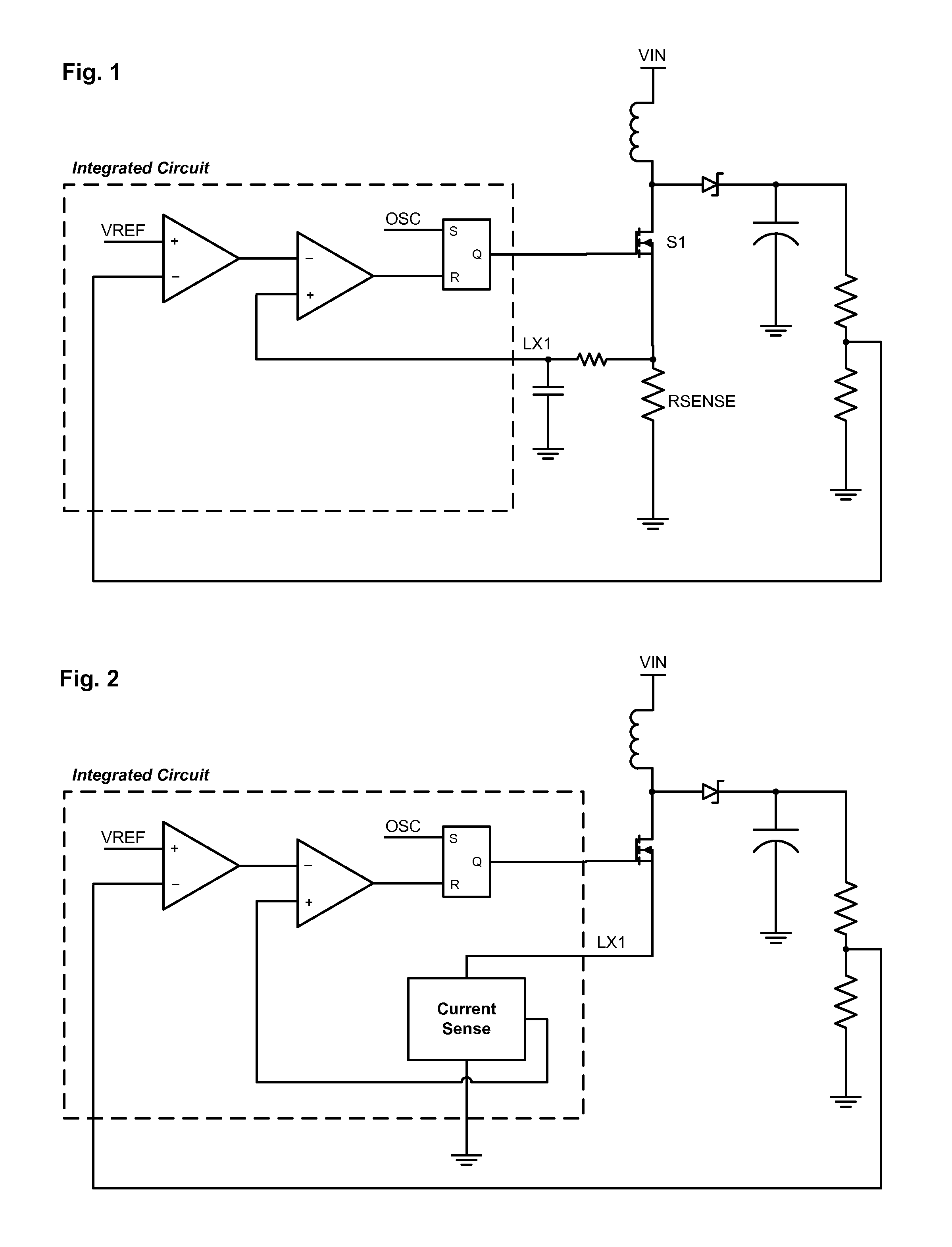Step Down Current Mirror for DC/DC Boost Converters
a converter and step-down current technology, applied in the direction of dc-dc conversion, power conversion systems, instruments, etc., can solve the problems of increasing system complexity, affecting the integration of such a chip, and affecting the efficiency of dc/dc boost converters, so as to reduce the large current, reduce the cost, and reduce the cost
- Summary
- Abstract
- Description
- Claims
- Application Information
AI Technical Summary
Benefits of technology
Problems solved by technology
Method used
Image
Examples
first embodiment
[0021]One inconvenience with this first embodiment of the invention is that the voltage across Rsense is not referenced to ground; rather, it is referenced to a voltage source. This inconvenience can be alleviated with the addition of a second current mirror, shown in FIG. 5. This simpler current mirror reflects the “first produced” current (shown as I×MN2 / MN1) into a “second produced” current that flows through a relocated Rsense resistor that is referenced to ground. Other than the difference voltage references, the two circuits function similarly.
[0022]Another embodiment of the invention utilizes directly the output current of the current mirror. Consider a boost converter in which the error element is an operational transconductance amplifier rather than the more standard operational amplifier. In this instance, the summation of the two currents—one from the OTA and the other from the current mirror—could be used directly as the input to an oscillator that drives the MOSFET. FIG...
second embodiment
[0024]FIG. 8 shows the invention as it would appear in a more complex appliance—a television with an LED backlight. In this example, the individual strings of LEDs (there could be multiple dozens of strings, or even more) are each controlled by individual current sinks. (The current sinks are controlled by a separate controller part of the television.) In order for the current sinks to function, they must have access to 1.2 volts. The black box in the drawing, which may be one IC or a series of ICs, takes as inputs the voltages above the current sinks and returns the single lowest voltage as its output, ensuring enough current for all of the strings by ensuring a minimal voltage across each of the current sinks.
PUM
 Login to View More
Login to View More Abstract
Description
Claims
Application Information
 Login to View More
Login to View More - R&D
- Intellectual Property
- Life Sciences
- Materials
- Tech Scout
- Unparalleled Data Quality
- Higher Quality Content
- 60% Fewer Hallucinations
Browse by: Latest US Patents, China's latest patents, Technical Efficacy Thesaurus, Application Domain, Technology Topic, Popular Technical Reports.
© 2025 PatSnap. All rights reserved.Legal|Privacy policy|Modern Slavery Act Transparency Statement|Sitemap|About US| Contact US: help@patsnap.com



